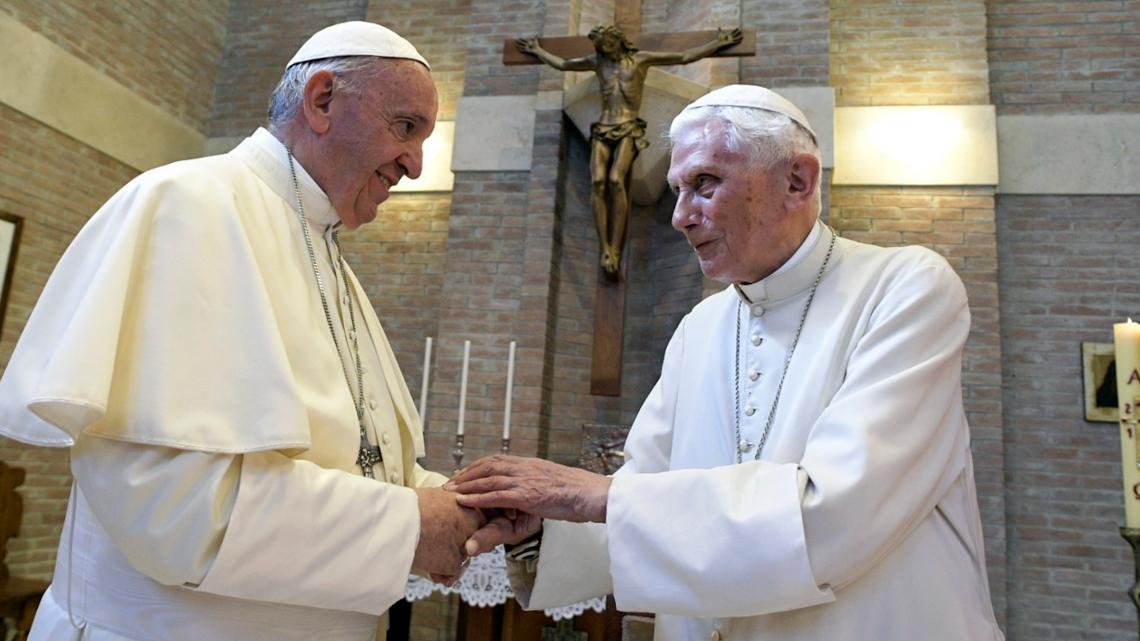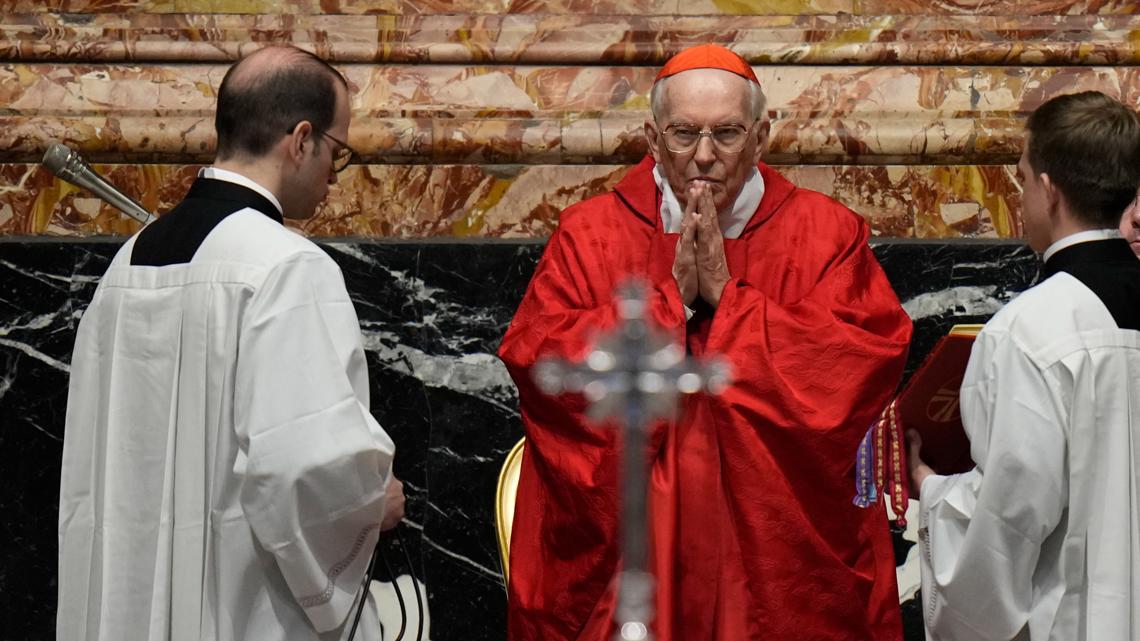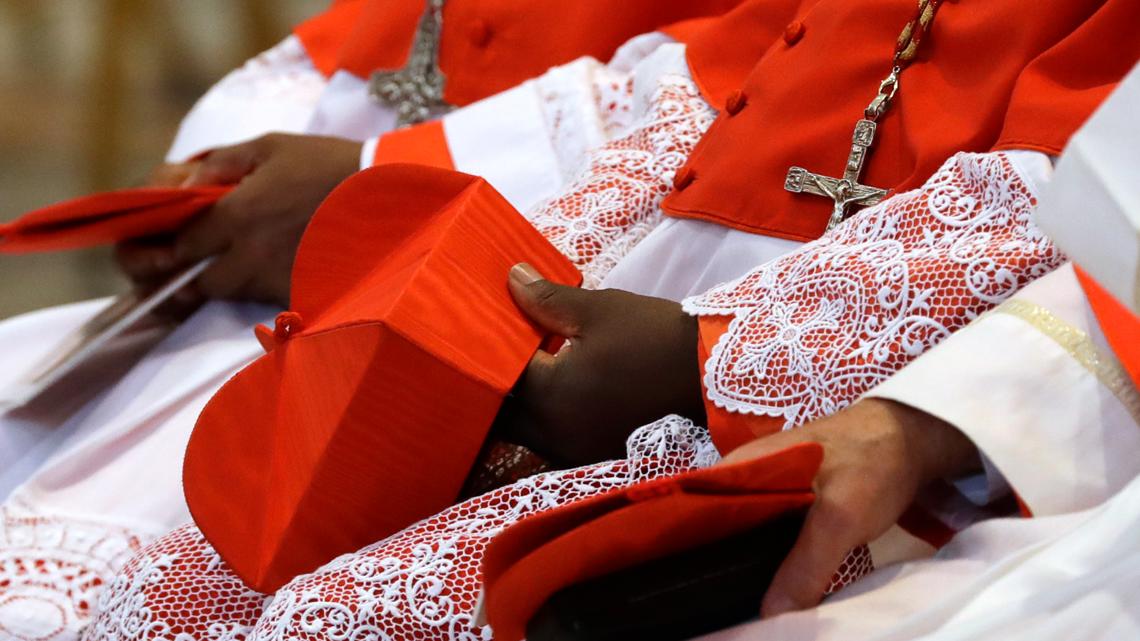WASHINGTON — As Pope Francis, 88, undergoes treatment for double pneumonia, many are wondering how and who gets to choose the next head of the Catholic Church.
Francis, born Jorge Mario Bergoglio, has been at the helm of the Catholic Church for the last 12 years. The Argentinian-born Francis was the first pope born or raised outside of Europe in over 1,000 years.
Like his predecessors, Francis was selected using an age-old method — a system known as the Papal conclave. Interest in papal elections has also surged recently thanks to the Oscar-nominated film “Conclave.”
What is a conclave?
Following a pope’s death or resignation, the College of Cardinals meets to select the new pope. The event is called the “conclave,” which in Latin translates to “with Key.”
The conclave has remained virtually unchanged for the last 800 years and typically begins 15 to 20 days after the pope’s death or resignation.
To kick off the process, the cardinals will gather for a special morning mass at the Vatican, invoking “the guidance of the Holy Spirit in electing the new pope,” according to the United States Conference of Catholic Bishops.
Following the mass, the cardinals then proceed to the Sistine Chapel and take an oath of secrecy before the doors are shut. The Sistine Chapel has been used for the special meeting since 1858.
The cardinals vote by secret ballot and the pope’s successor must receive two-thirds of the vote to be elected. Each cardinal will write down their vote on a ballot, that is then twice folded before it is placed in a large chalice. The results of each round are counted aloud and if it does not yield the two-third majority, then the ballots are burned in a special stove along with a mixture of chemicals to produce black smoke — signaling that a pope has yet to be chosen.
Four rounds of balloting are taken each day, except on the first day, until a candidate is selected. There are traditionally two rounds in the morning and two in the afternoon.
If no one is elected after three days, voting pauses for up to one day. Voting resumes and if no pope is elected after another seven ballots, there is another pause, and so on until about 12 days of balloting have passed.
Under norms introduced by Benedict XVI just before he resigned, the cardinals then go to a runoff of the top two vote-getters. A two-thirds majority is required; neither of the two top candidates casts a ballot in the runoff.
Once someone receives the two-thirds majority, the dean of the College of Cardinals asks the candidate if they accept the election. If the candidate accepts, he chooses a papal name and is dressed in the papal outfit before he is introduced on the iconic St. Peter’s Basilica balcony.
When a new pope is elected, the final ballots are burned along with other chemicals that produce a white smoke. The smoke, called fumata bianca, is sent out to inform Rome and the rest of the world that there is a new pope.


Why are cardinals locked inside the Sistine Chapel?
The cardinals are locked inside the Sistine Chapel to ensure secrecy and to avoid outside influence.
Even before the formal procedure begins, all telephones, cell phones, radios, televisions and internet connections are cut.
No letters or newspapers are permitted during the conclave.
Who are the cardinals?
Cardinals are bishops and Vatican officials from around the world, typically chosen by the pope himself. They distinguish themselves with red vestments and their main responsibility is to help elect a new leader of the Catholic Church.
Only Cardinals under the age of 80 are allowed to cast a vote for pope, under current Vatican rules.
The Catholic Church has a list of the College of Cardinals and biographies for the 119 electors.
The Dean of the College of Cardinals plays an important role in the life of the Catholic hierarchy, a point of reference for his fellow cardinals and a crucial figure during the transition between one papacy and the next.
After a pope dies or resigns, the dean runs the secret meetings where cardinals discuss the needs of the church and the qualities a future pope must have, and then organizes the conclave balloting in the Sistine Chapel.
After a pope is elected, it’s the dean who asks the winner if he accepts the job, and the name he wants to be called.
In early February, Pope Francis decided to extend the term of the current dean of the College of Cardinals rather than make way for someone new. The Vatican said Francis had decided to prolong the mandate of Cardinal Giovanni Battista Re, 91, as dean of the college.


How long does the conclave last?
Typically, the conclaves last less than a week but they can last as long as it takes to elect a new pope. Over the past century, no conclave has lasted more than five days.
The last lengthy conclave was in 1740 and lasted six months.
Conclaves for Pope Francis and Pope Benedict XVI lasted two days.
Who will the next Pope be?
Although any man who is baptized and ordained a priest and a bishop can be elected pope, it is usually someone within the College of Cardinals.
The last time the cardinals reached outside their ranks was in 1378 when Urban VI was elected pope.

